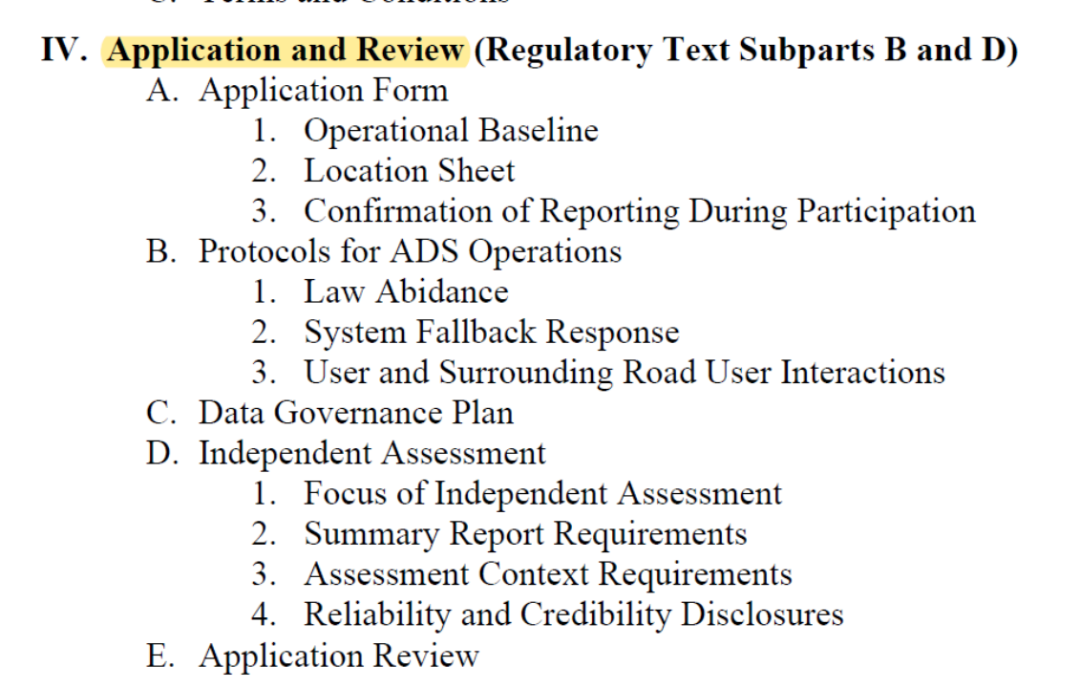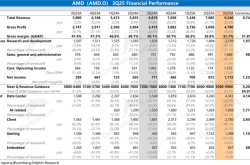Autonomous Driving Deregulation on the Horizon! U.S. NHTSA Unveils National Plan for ADS Vehicles
![]() 12/26 2024
12/26 2024
![]() 552
552


Source: ICV Technology
The U.S. National Highway Traffic Safety Administration (NHTSA) is poised to ease regulations on fully autonomous vehicles, contingent on companies providing necessary data. NHTSA aims to enhance its expertise in autonomous vehicle road safety by leveraging operational data shared by companies deploying such technology.
·The proposed rule, dubbed the Vehicle Safety, Transparency, and Evaluation Program for Vehicles Equipped with ADS (AV STEP), aims to streamline oversight.
·AV STEP will remove the cap on the number of vehicles allowed to use various advanced driving systems, including fully autonomous driving without human control. This will allow the agency to authorize the sale and commercialization of more vehicles lacking traditional controls, bypassing the annual safety exemption request limit (2,500 per company) previously imposed by safety regulators. NHTSA promises a "tailored exemption pathway" for ADS-equipped vehicles.
·To date, only Nuro has received an FMVSS exemption, as its low-speed delivery robots do not accommodate human passengers. GM and Ford Motor Company attempted but ultimately abandoned efforts to secure exemptions for their autonomous Cruise vehicles.
·In exchange, the agency requires autonomous vehicle operators to provide more data, believing that increased transparency is vital to fostering public trust in the technology.
·Whether AV STEP will continue under the incoming Trump administration remains uncertain. Reports suggest the new administration aims to repeal a Biden-era transparency rule requiring companies operating vehicles with driver assistance features and autonomous vehicles to report accidents and injuries to the federal government.
National Program for Vehicles with Autonomous Driving Systems
On December 20, 2024, the U.S. Department of Transportation's National Highway Traffic Safety Administration (NHTSA) proposed a voluntary national framework for evaluating and monitoring certain vehicles equipped with autonomous driving systems, enhancing transparency and providing insights into the safety and performance of ADS-equipped vehicles.

The ADS-equipped Vehicle Safety, Transparency, and Evaluation Program (AV STEP) establishes a voluntary review and reporting framework for participating ADS-equipped vehicles. The program is open to all companies operating or planning to operate compliant ADS-equipped vehicles on public roads, as well as those requiring NHTSA exemptions for non-compliant vehicles.

AV STEP increases transparency in ADS operations, aiding the agency in researching and monitoring the maturity of ADS technology. Data forms the cornerstone of NHTSA's work, and the proposed plan offers deeper insights into ADS development and operational data for both NHTSA and the public.
Furthermore, AV STEP aligns with the U.S. Department of Transportation's National Road Safety Strategy released in January 2022, outlining a comprehensive approach to significantly reduce casualties on highways, roads, and streets through a safety systems approach.
This enhanced transparency promotes responsible ADS technology development and provides automakers, operators, municipalities, researchers, and policymakers with opportunities to benefit from increased public awareness and accelerated learning about the technology. Under AV STEP, NHTSA's application assessment will be based on the opinions of independent third-party assessors.
AV STEP also includes two new exemption procedures designed to optimize NHTSA's management of ADS exemptions, which do not replace existing exemption procedures but draw on past experience to offer more avenues for regulatory flexibility.
The document proposes a voluntary framework for evaluating and monitoring motor vehicles equipped with Autonomous Driving Systems (ADS). The ADS-equipped Vehicle Safety, Transparency, and Evaluation Program (AV STEP) establishes a national plan for vehicles equipped with ADS operating or potentially operating on public roads under NHTSA oversight. This aims to enhance public transparency regarding the safety of certain ADS-equipped vehicles while enabling responsible technology development.
Vehicle manufacturers, ADS developers, fleet operators, and system integrators can apply to participate in AV STEP through Step 1 or Step 2, depending on whether the proposed vehicle operation requires a fallback driver. Each step sets minimum eligibility requirements corresponding to the scope of ADS operation. AV STEP also applies to vehicles equipped with ADS that can legally operate on public roads and those requiring FMVSS exemptions or non-operational exemptions.
The proposal includes application, participation, public reporting, and project management procedures. It specifies content requirements for applications, including independent assessments of ADS safety processes such as safety cases used and compliance with industry standards. These application requirements inform NHTSA's decisions on participation terms and conditions. The proposal also outlines reporting requirements for participants, including periodic and event-triggered reports.

Executive Summary
Autonomous Driving Systems (ADS) are evolving rapidly, posing challenges for automakers and regulatory agencies regarding public safety. It is crucial that ADS technology deployment protects the public from unreasonable safety risks while enabling responsible development that has the potential to enhance safety. Under NHTSA's current regulatory framework, implementing the National Traffic and Motor Vehicle Safety Act (Safety Act), automakers can deploy ADS-equipped vehicles on public roads if they comply with existing Federal Motor Vehicle Safety Standards (FMVSS) and state and local laws.
Many ADS operations adopt this approach, and FMVSS currently does not specifically establish performance standards for ADS. Vehicles compliant with all applicable FMVSS can typically be equipped with ADS technology without NHTSA approval. Alternatively, if an ADS-equipped vehicle does not comply with all FMVSS, an exemption can be requested from NHTSA. Past ADS-related exemption requests typically involved specialized vehicles designed specifically for ADS operation.
To address the current ADS landscape, this document proposes a national plan, the "Vehicle Safety, Transparency, and Evaluation Program for Vehicles Equipped with ADS" (AV STEP), aimed at complementing and advancing NHTSA's ADS oversight, rulemaking, research, and transparency efforts, and supporting newly proposed processes for ADS-equipped vehicle exemptions. This voluntary plan provides NHTSA with a framework for reviewing and monitoring ADS-equipped vehicles as the technology continues to evolve rapidly.
As ADS technology matures, NHTSA anticipates the need to establish minimum standards for ADS safety performance, similar to how existing FMVSS govern the performance of traditional vehicle systems and attributes. However, the data, methods, and metrics to support these standards are currently unavailable. Many elements in this Notice of Proposed Rulemaking (NPRM) are designed to help NHTSA gather insights and data to support the future development of such standards.
In future developments, AV STEP will serve as a national plan for evolving technology, providing interim regulatory support and offering automakers and other participants a process to build public trust by demonstrating a commitment to responsible safety practices, accountability, and transparency.
As a voluntary program, AV STEP is offered to vehicle manufacturers, ADS developers, fleet operators, and system integrators for ADS-equipped vehicles seeking to operate on U.S. public roads. NHTSA proposes AV STEP for two categories of ADS-equipped vehicles: those requiring exemptions and those legally operating on public roads today. For exemption-requiring vehicles, AV STEP offers a tailored exemption pathway. For all entities seeking to participate in AV STEP, the program provides an opportunity to demonstrate operational safety and transparency by participating in a national plan with clear participation and reporting standards focused on enhancing safety.
Under the proposed plan, applicants provide NHTSA with information and data related to the design, development, and operational safety of ADS-equipped vehicles for their intended deployment under the program. NHTSA reviews this information, communicates with applicants as needed, and establishes terms and conditions for program participation. Once in AV STEP, participants must submit periodic and event-triggered reports to NHTSA. To enhance public transparency, the agency also proposes publishing most application and report information received by NHTSA.

Program acceptance is based on the adequacy of provided information and coordination with the applicant on participation terms and conditions. Acceptance reflects NHTSA's determination that the applicant has provided evidence of adherence to a documented engineering process and possesses the required technical, operational, and management resources to mitigate safety concerns. Acceptance does not guarantee safety, validate ADS technology, or ensure the applicant will perform its operational oversight functions as described. As ADS-equipped vehicles are deployed on public roads, NHTSA will continue to exercise its existing defect and investigation authorities.
The program is organized into two participation levels: Step 1 and Step 2. Generally, Step 1 applies to vehicles relying on a fallback driver, while Step 2 applies to those that do not. The proposed participation requirements differ due to the significant risk management differences between these scenarios. In fallback driver-reliant operations, human intervention is required to compensate for ADS shortcomings, whereas in fallback-free operations, the ADS must safely handle all driving scenarios without intervention.
AV STEP will enhance public transparency and federal oversight of ADS technology, aiding in understanding and addressing emerging deployment risks. The agency proposes reviewing AV STEP applications partially using the applicant's safety case, a structured, evidence-supported argument demonstrating the system's safety for specific use in a particular context. The safety case concept is commonly used in safety-critical industries like aviation, energy (including nuclear), medical devices, and other technology sectors.
AV STEP applications require an independent entity with professional experience and expertise to assess the applicant's safety case. This independent assessment considers the overall safety of ADS-equipped vehicles, addressing technical, organizational, and operational challenges related to safety decisions. While current testing and evaluation methods cannot conclusively determine ADS safety, this approach aids NHTSA in reviewing engineering rigor and due diligence applied to system development and operation, providing a proactive opportunity to identify and address safety concerns.
By promoting a safer, more transparent, and responsible environment for ADS development and deployment in the U.S., AV STEP aims to foster the technological innovation and public confidence necessary to advance ADS, along with its potential significant safety benefits.
https://www.nhtsa.gov/press-releases/nhtsa-proposes-national-program-vehicles-automated-driving-systems
Disclaimer:
Any works on this official account marked as "Source: XXX (not ICV Technology)" are reprinted from other media. The purpose of reprinting is to convey and share more information and does not necessarily indicate agreement with the views or responsibility for their authenticity. The copyright belongs to the original author. If there is any infringement, please contact us for deletion.








